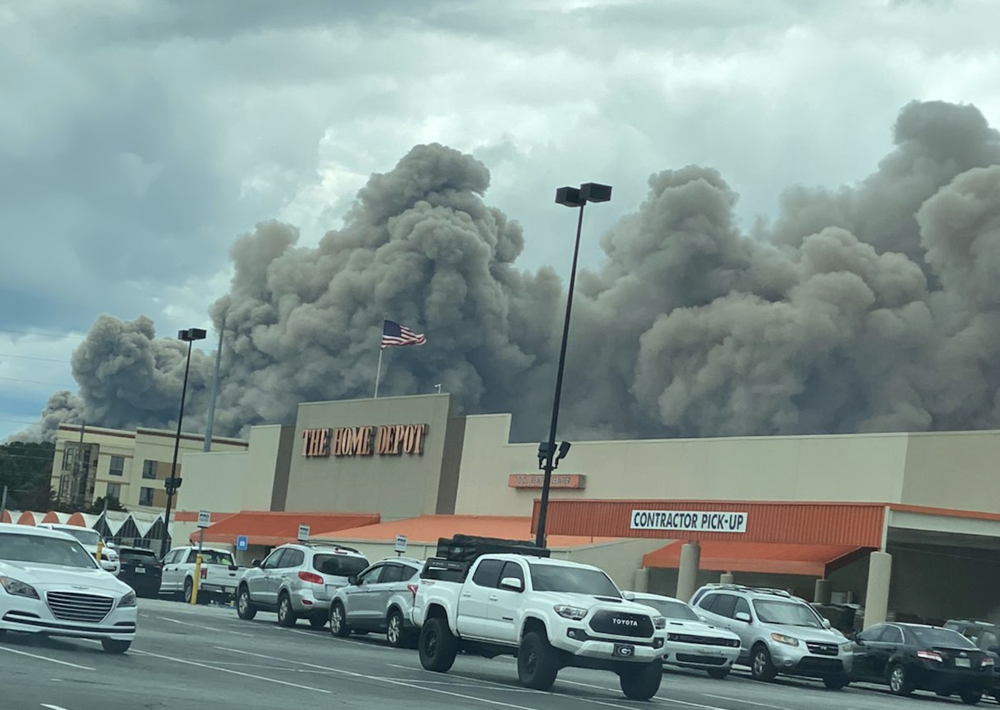
Caption
Billowing smoke from a fire at the BioLab facility in Conyers, Ga., can be seen from a Home Depot parking lot Sunday, Sept. 29, 2024. Days later, a plume of chlorine gas can still be detected in parts of the Atlanta metro area.
Credit: Victoria Evans-Cash/GPB News

